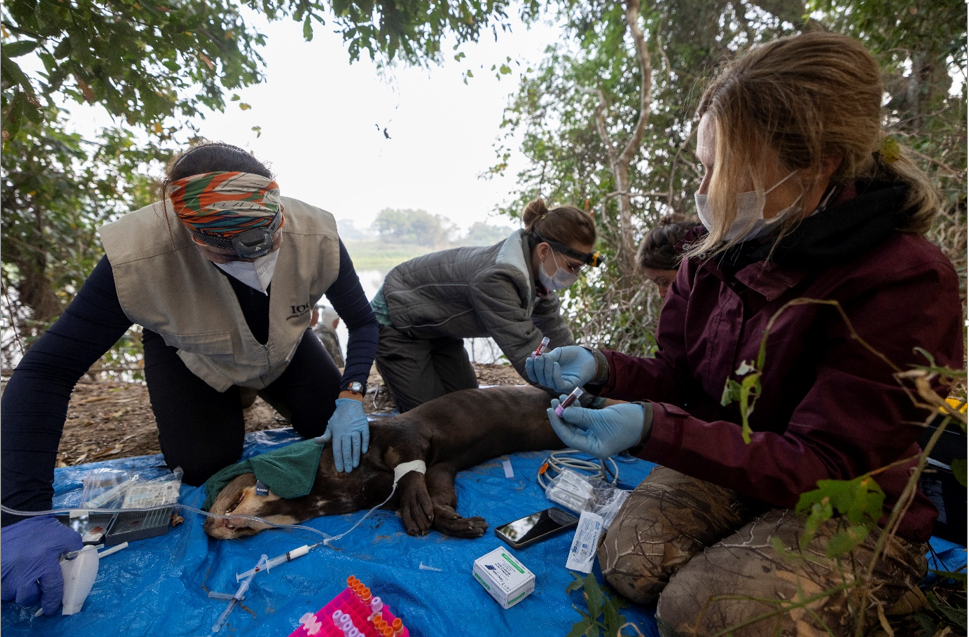
We’re proud to be supporting Projeto Ariranhas this year as they work to protect Brazil’s endangered giant otters.
Led by Caroline Leuchtenberger, the team is dedicated to understanding the challenges facing these remarkable animals. This essential work, including field monitoring and health assessments, allows them to develop effective conservation strategies for the species. Below, Caroline shares an update on their recent work.
Update from Projeto Ariranhas
In August, our team conducted fieldwork in the Passo do Lontra region, Mato Grosso do Sul, aiming to capture and collect biological samples from wild giant otters. This action is part of a project dedicated to assessing the health of the species and the threats linked to environmental quality.
During this mission, we captured and monitored a solitary male named Cielo, in honor of Brazilian swimmer César Cielo, an Olympic champion and world-record holder.
Cielo stood out for his remarkable swimming skills. Weighing 32 kg, he is among the largest males ever captured in the region, where the maximum recorded weight was 32.9 kg.
The biological samples collected will allow a more accurate assessment of Cielo's health, indicating the quality of his habitat.
Our gratitude extends to all involved in this significant mission. Through joint efforts, we are making substantial progress in giant otter’s conservation and the ecological balance of the Pantanal.
Our 2024 monitoring activities of giant otter population are in full swing. So far, the monitoring conducted in two distinct areas of the Pantanal (Porto Jofre and Rio Negro) and one in Tocantins (Parque Estadual do Cantão), covered approximately 233 km of rivers, where 74 giant otters have been cataloged, including 19 confirmed pups.
These otters are distributed across 11 groups, as well as a few solitary individuals. Long-term monitoring is essential for understanding the challenges facing this already endangered species. Habitat loss and degradation, human conflict, and the climate change impacts are just some of the threats it encounters.
This year, one of our monitoring areas, the Rio Negro, was severely affected by wildfires. Population monitoring has helped us measure the impact of these fires on the giant otter population and devise strategies to mitigate future incidents. Monitoring allows us to track the species’ real time responses to threats, facilitating strategies to minimize impacts and improve conservation. In addition, through direct observation of individuals, we collect biological samples and behavioral data that is crucial for deepening scientific knowledge about the species.
This information is vital for developing more effective conservation strategies to ensure the long-term survival of giant otters.
Caroline Leuchtenberger
President, Projeto Ariranhas




